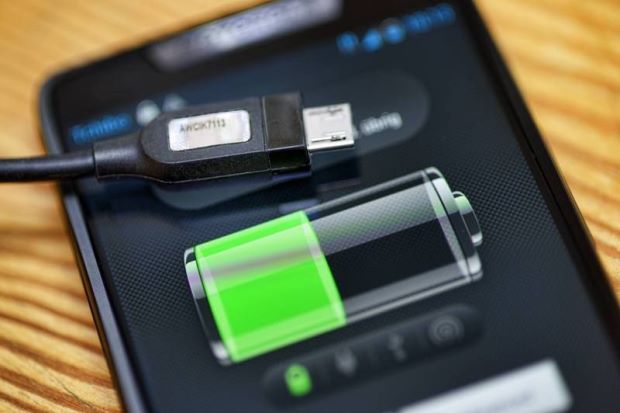
Waiting for your cell phone to charge may soon be a thing of the past.
Researchers from the University of Cambridge have identified a group of materials that could be used to make even higher power batteries that can charge within a matter of minutes.
The researchers used materials with a complex crystalline structure and found that lithium ions move through them at rates that far exceed those of typical electrode materials, which equates to a much faster-charging battery.
Although these materials, known as niobium tungsten oxides, do not result in higher energy densities when used under typical cycling rates, they come into their own for fast-charging applications. Additionally, their physical structure and chemical behavior give researchers a valuable insight into how a safe, super-fast charging battery could be constructed, and suggest that the solution to next-generation batteries may come from unconventional materials.
“We’re always looking for materials with high-rate battery performance, which would result in a much faster charge and could also deliver high power output,” said Dr Kent Griffith, a researcher in Cambridge’s Department of Chemistry and the paper’s first author.
In their simplest form, batteries are made of three components: a positive electrode, a negative electrode and an electrolyte. When a battery is charging, lithium ions are extracted from the positive electrode and move through the crystal structure to the negative electrode, where they are stored. The faster this process occurs, the faster the battery can be charged.
In the search for new electrode materials, researchers normally try to make the particles smaller.
“The idea is that if you make the distance the lithium ions have to travel shorter, it should give you higher rate performance,” said Griffith. “But it’s difficult to make a practical battery with nanoparticles: you get a lot more unwanted chemical reactions with the electrolyte, so the battery doesn’t last as long, plus it’s expensive to make.”
“Nanoparticles can be tricky to make, which is why we’re searching for materials that inherently have the properties we’re looking for even when they are used as comparatively large micron-sized particles. This means that you don’t have to go through a complicated process to make them, which keeps costs low,” said Professor Clare Grey, also from the Department of Chemistry and the paper’s senior author. “Nanoparticles are also challenging to work with on a practical level, as they tend to be quite ‘fluffy’, so it’s difficult to pack them tightly together, which is key for a battery’s volumetric energy density.”
The new oxides used in the current work have a rigid, open structure that does not trap the inserted lithium, and have larger particle sizes than many other electrode materials. Griffith speculates that the reason these materials have not received attention previously is related to their complex atomic arrangements. However, he suggests that the structural complexity and mixed-metal composition are the very reasons the materials exhibit unique transport properties.
“Many battery materials are based on the same two or three crystal structures, but these niobium tungsten oxides are fundamentally different,” said Griffith. The oxides are held open by ‘pillars’ of oxygen, which enables lithium ions to move through them in three dimensions. “The oxygen pillars, or shear planes, make these materials more rigid than other battery compounds, so that, plus their open structures means that more lithium ions can move through them, and far more quickly.”
The researchers measured the movement of lithium ions through the oxides, and found that they moved at rates several orders of magnitude higher than typical electrode materials.
Most negative electrodes in current lithium-ion batteries are made of graphite, which has a high energy density, but when charged at high rates, tends to form spindly lithium metal fibers, which can create a short-circuit and cause the batteries to catch fire and possibly explode.
“In high-rate applications, safety is a bigger concern than under any other operating circumstances,” said Grey. “These materials, and potentially others like them, would definitely be worth looking at for fast-charging applications where you need a safer alternative to graphite.”
In addition to their high lithium transport rates, the new oxides are also simple to make.
While the oxides may only be suited for certain applications, Grey says that the important thing is to keep looking for new chemistries and new materials. “Fields stagnate if you don’t keep looking for new compounds,” she says. “These interesting materials give us a good insight into how we might design higher rate electrode materials.”
